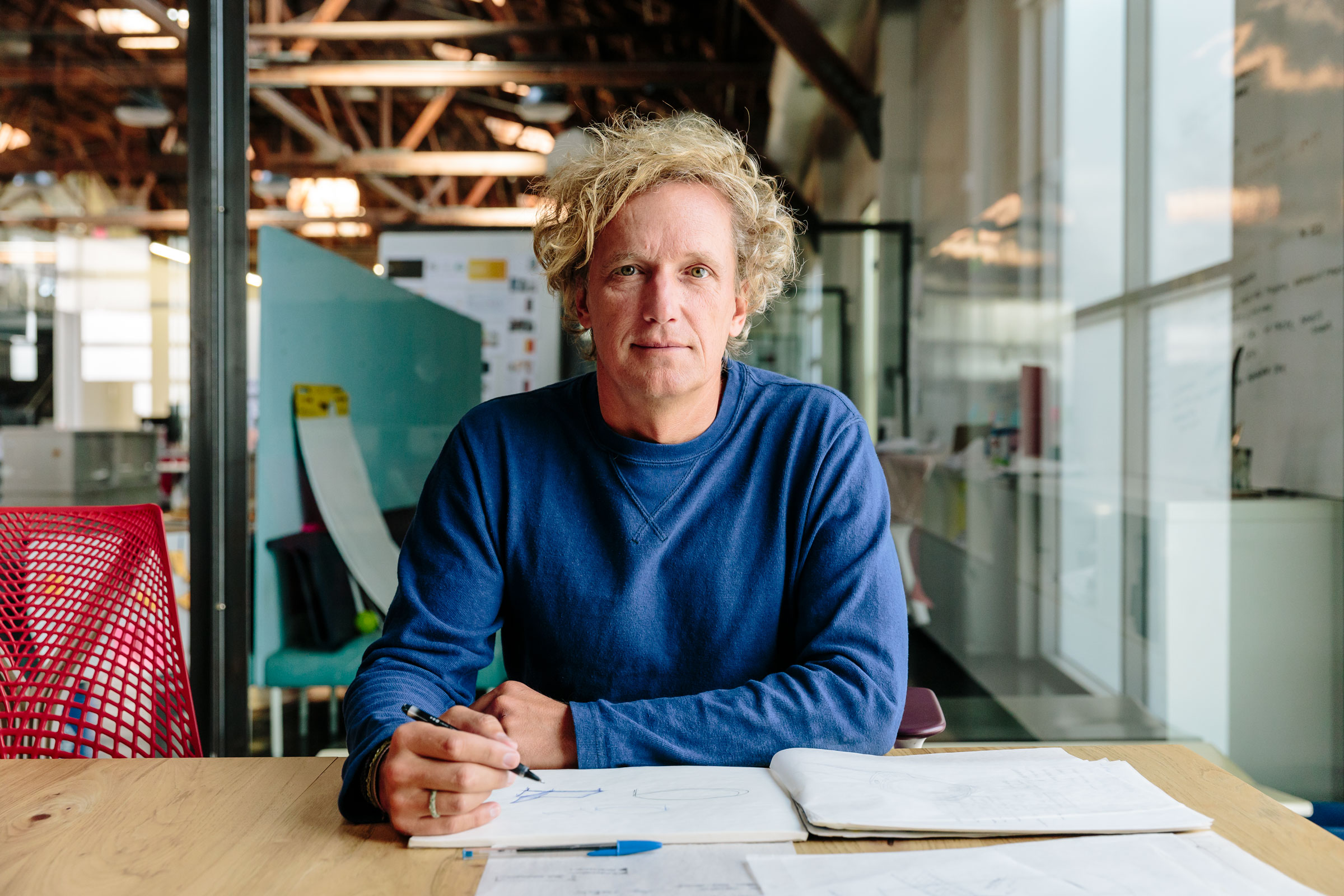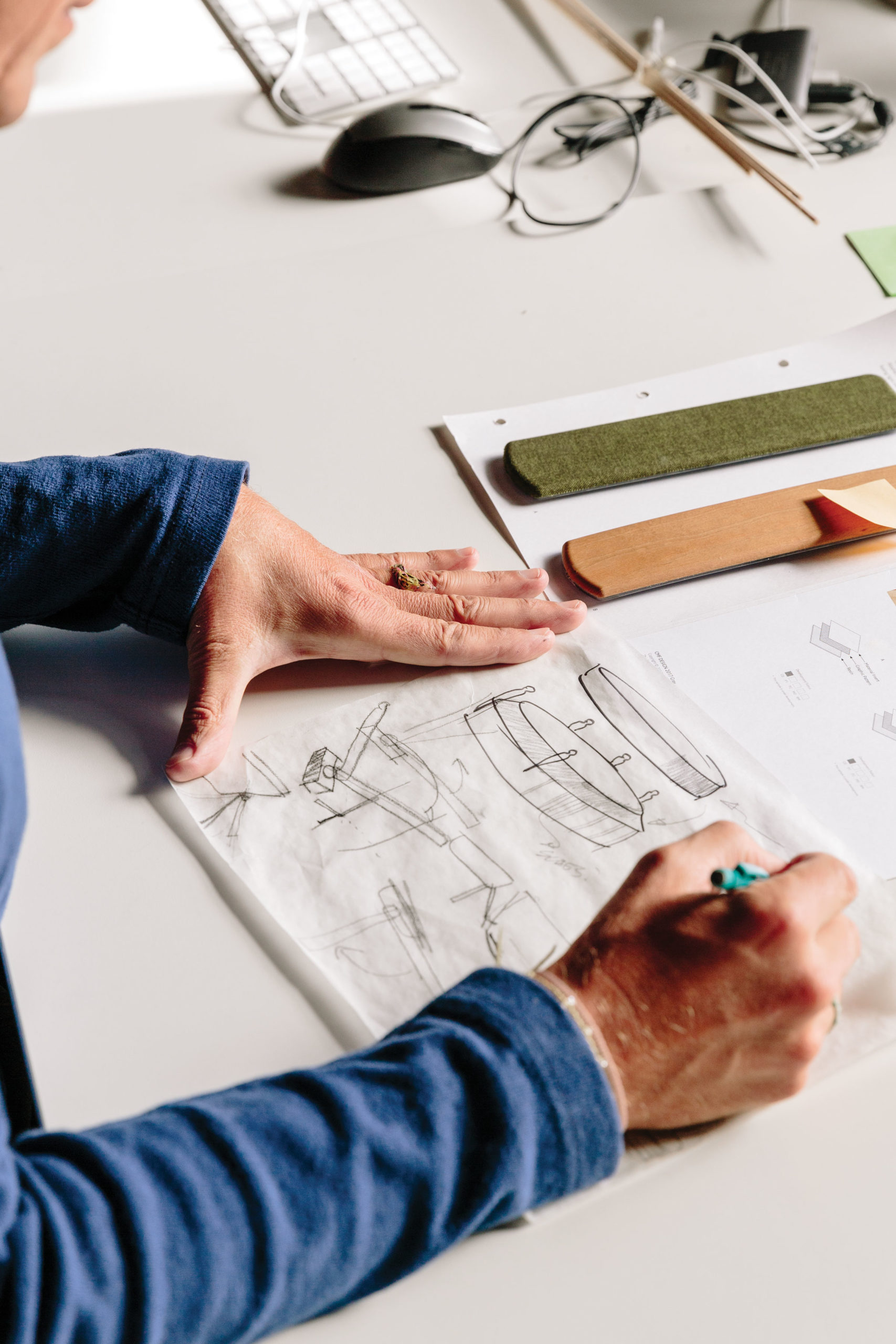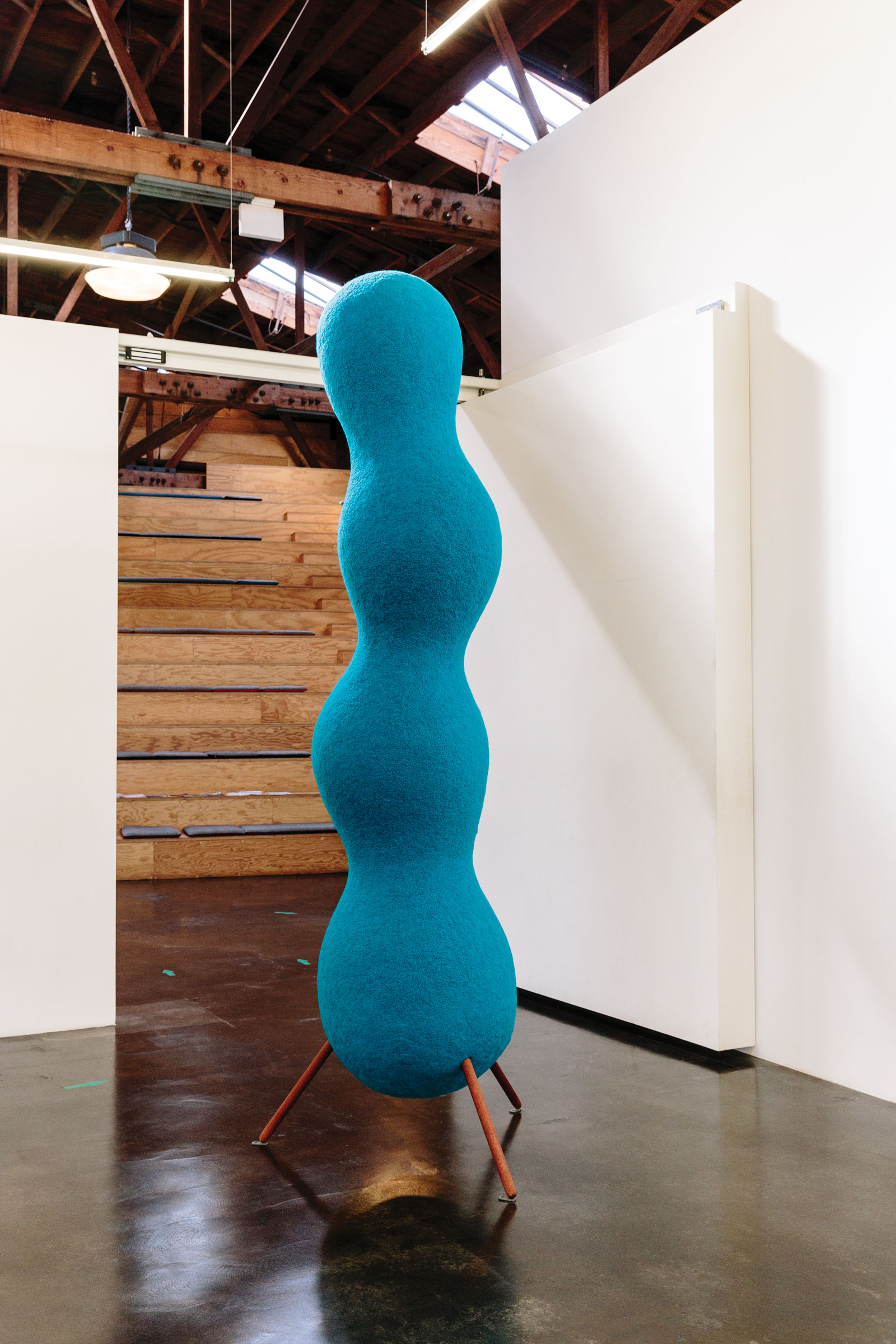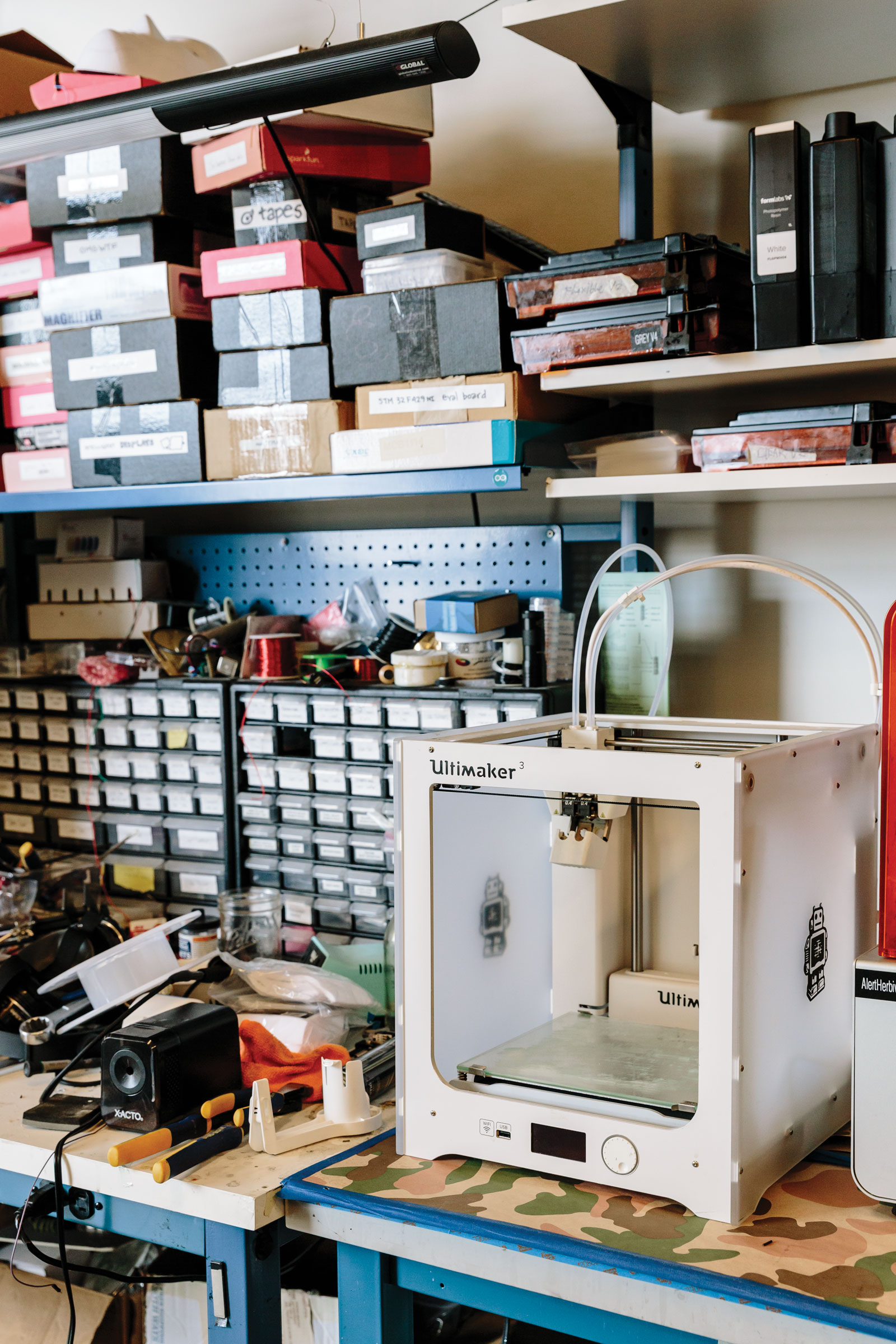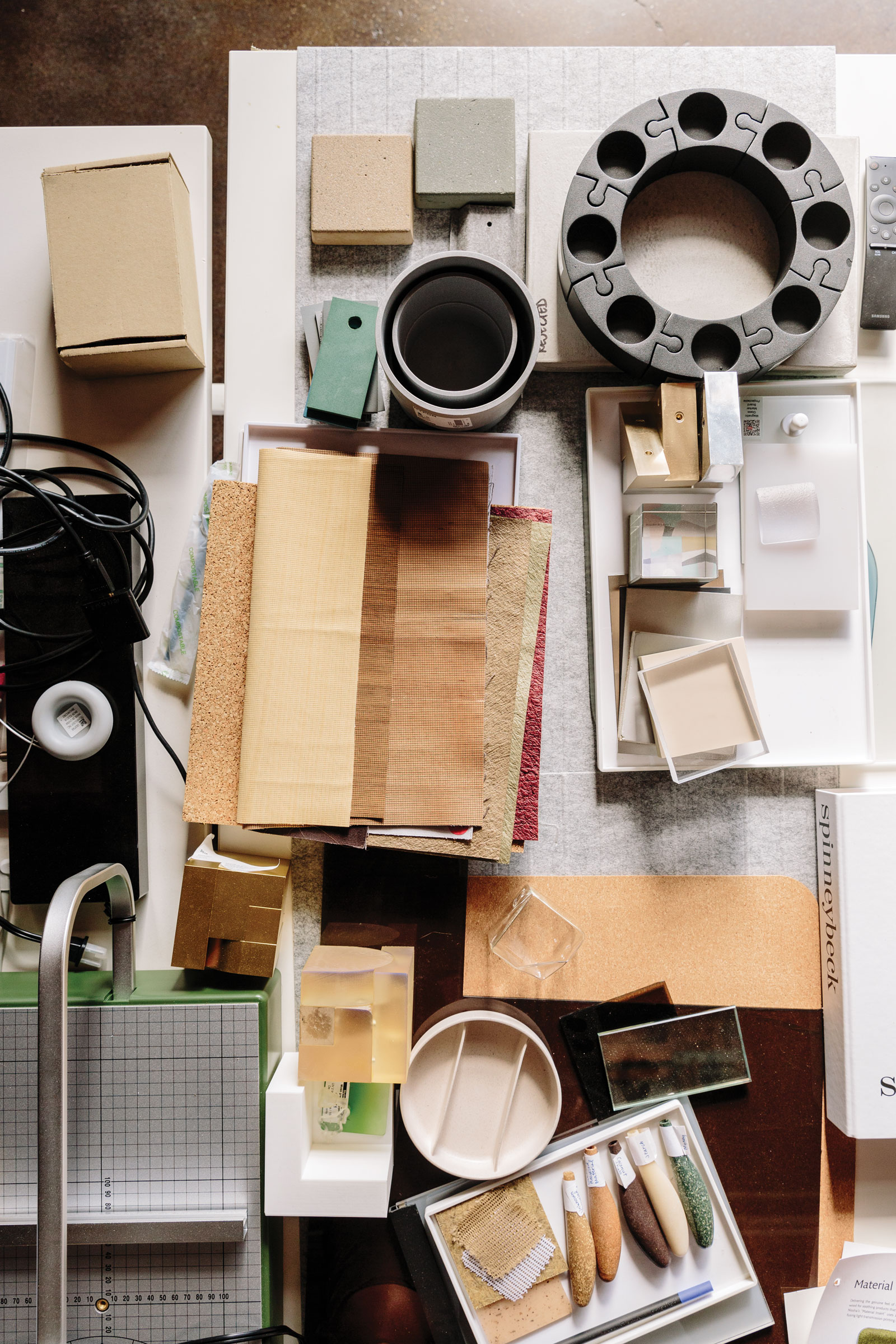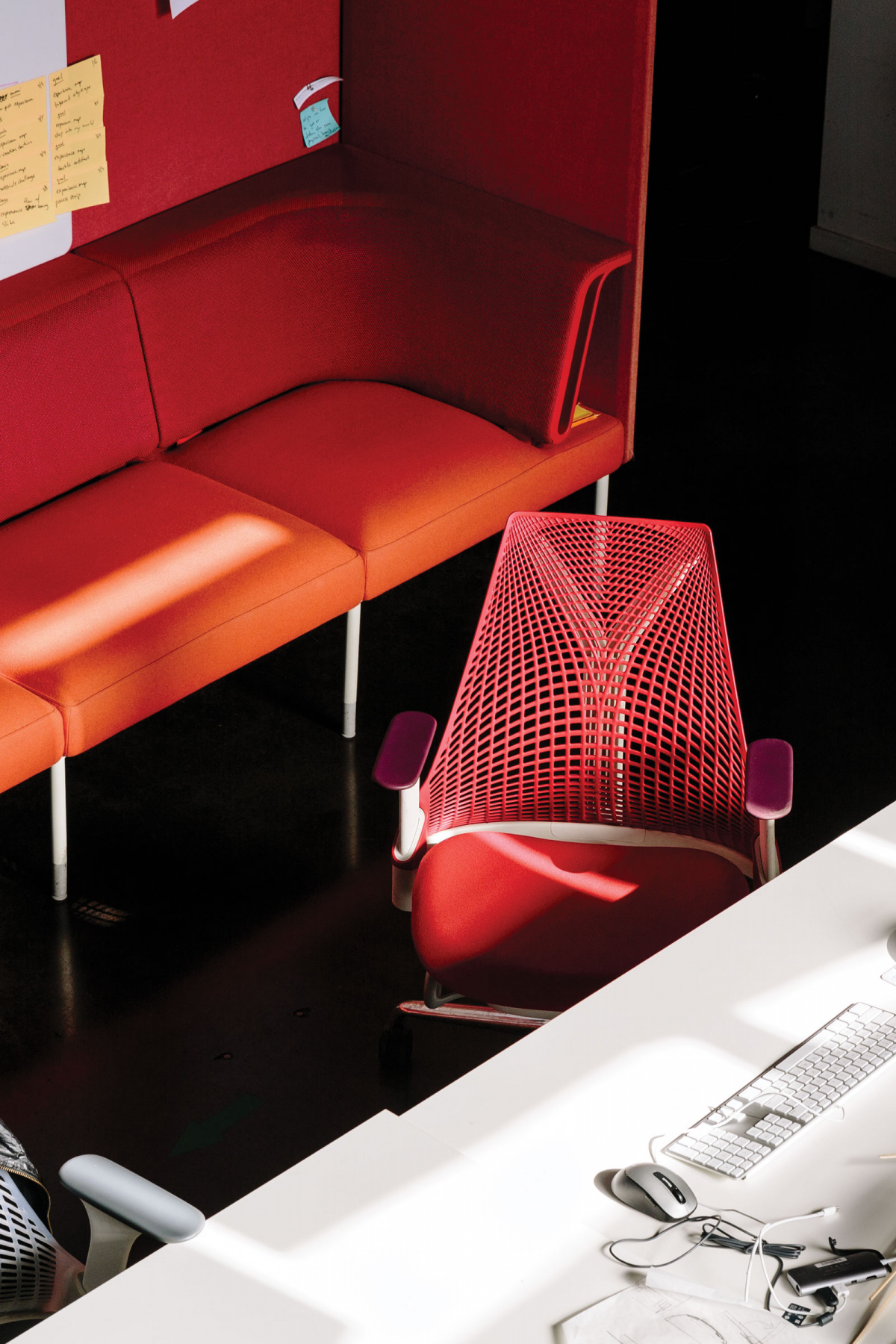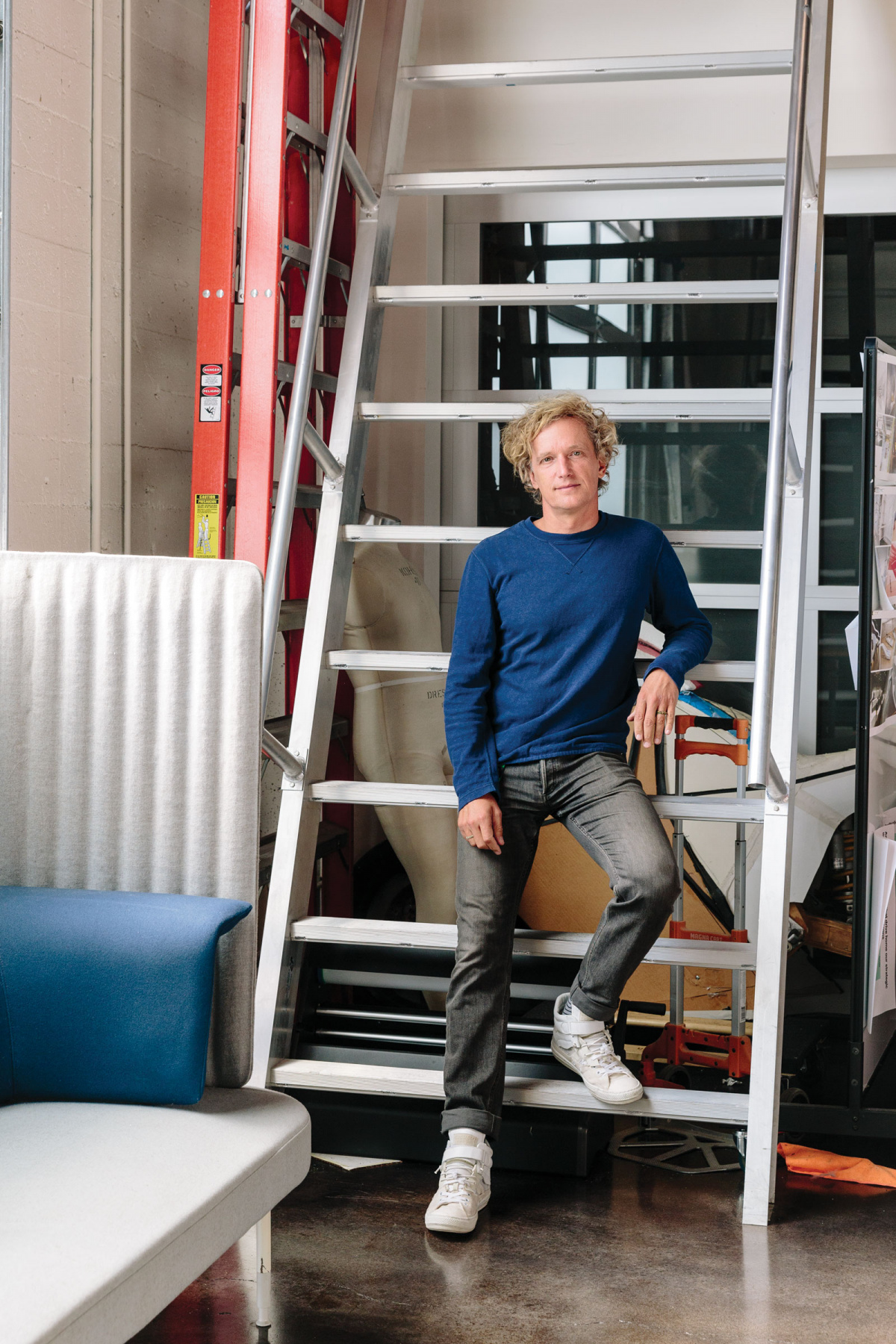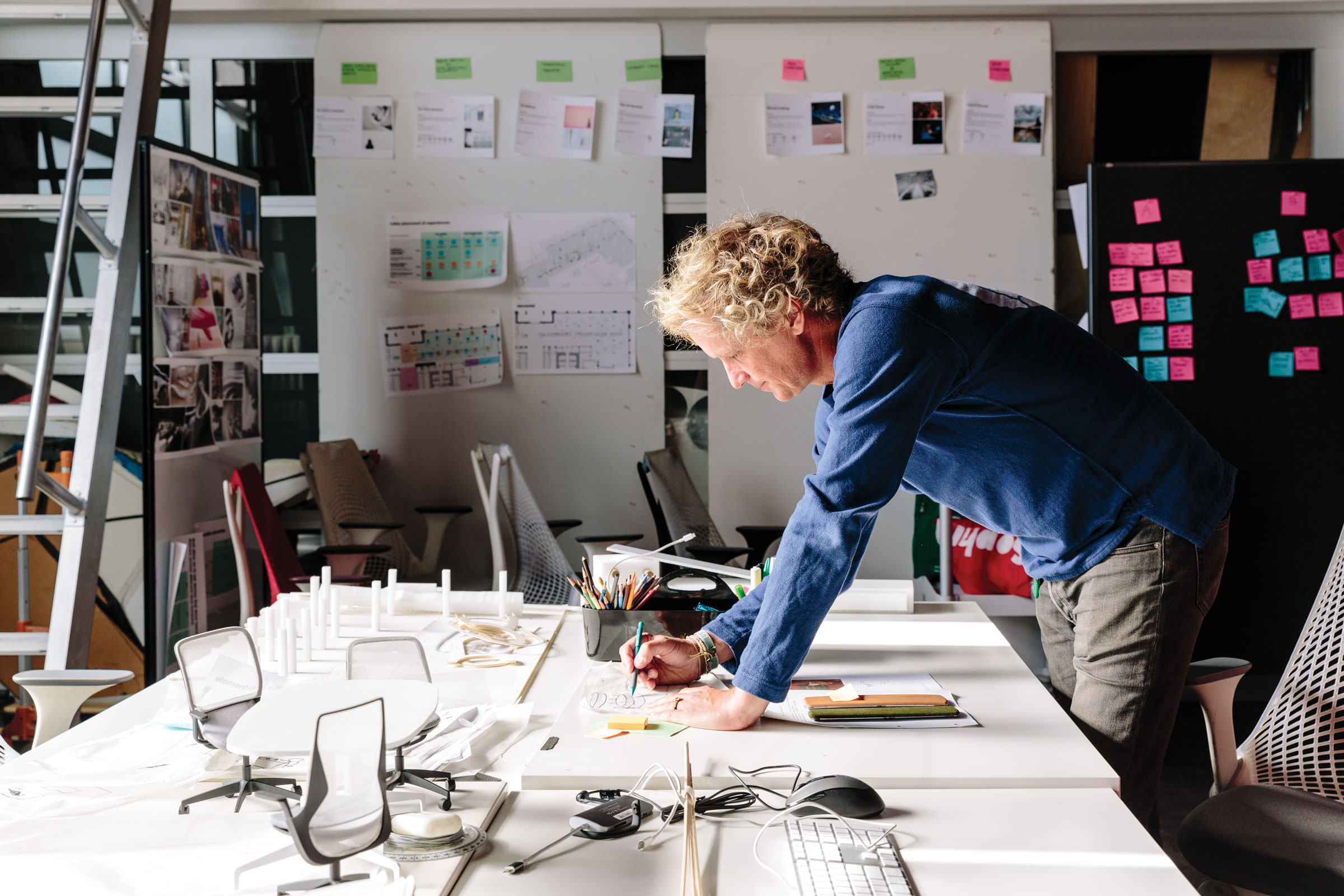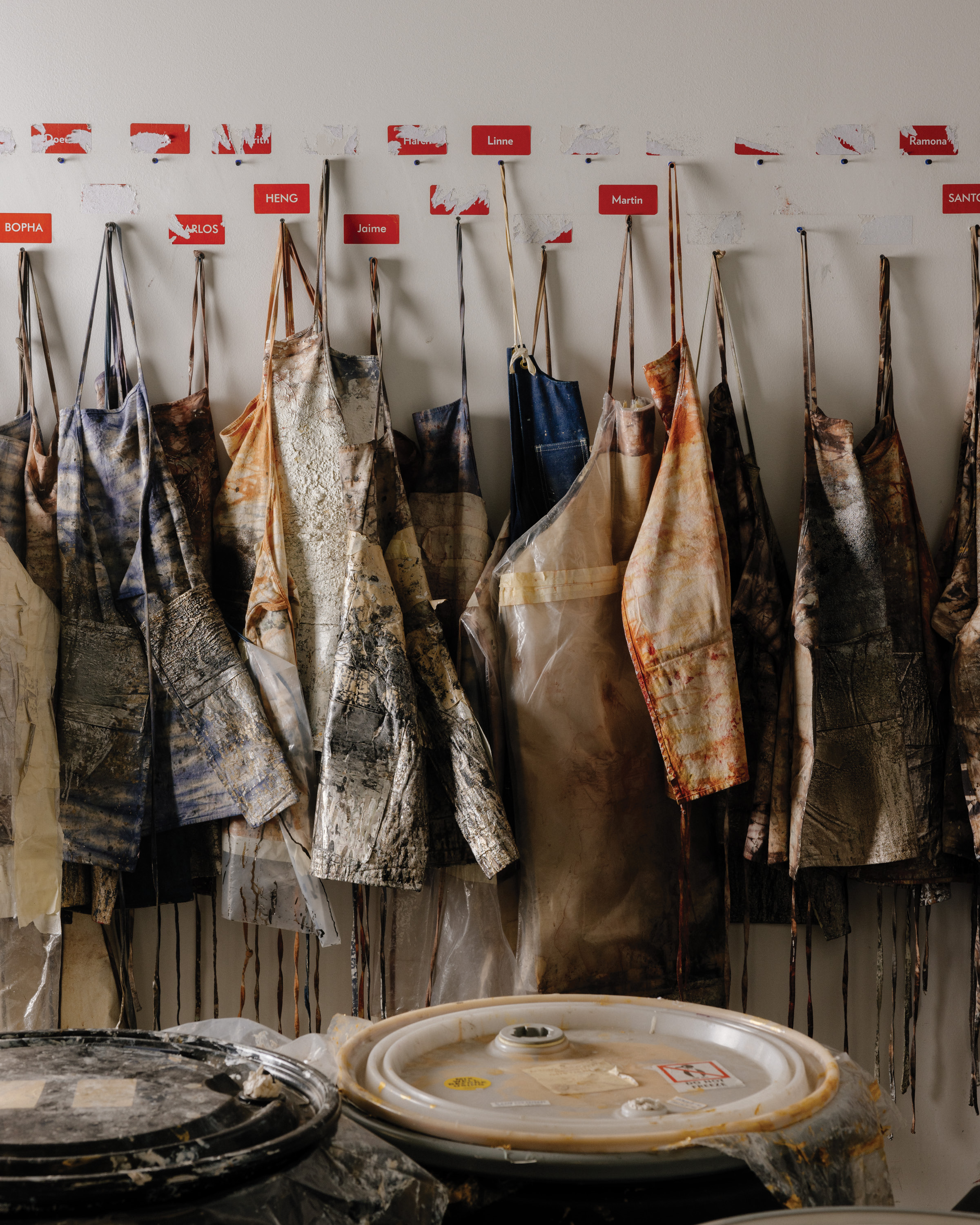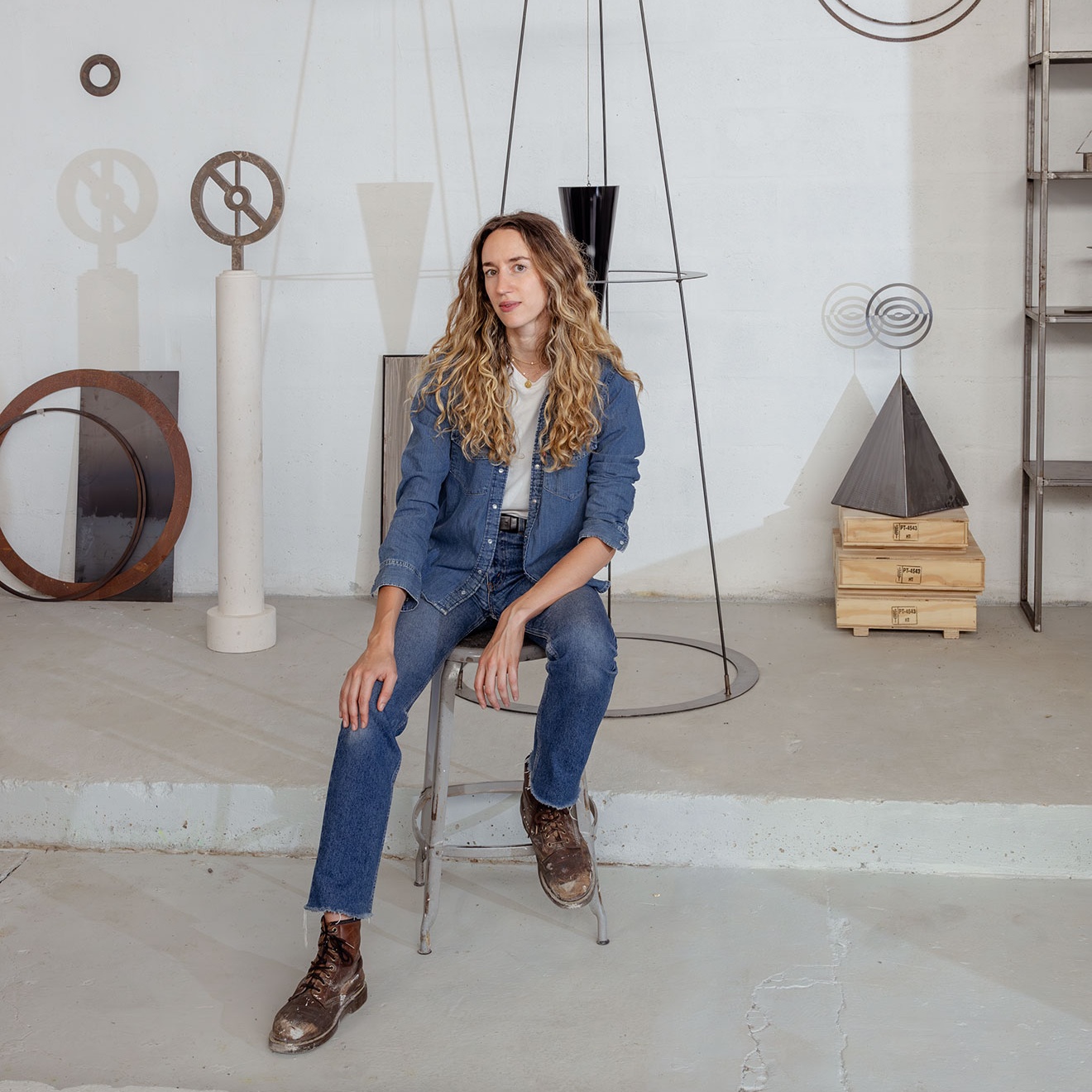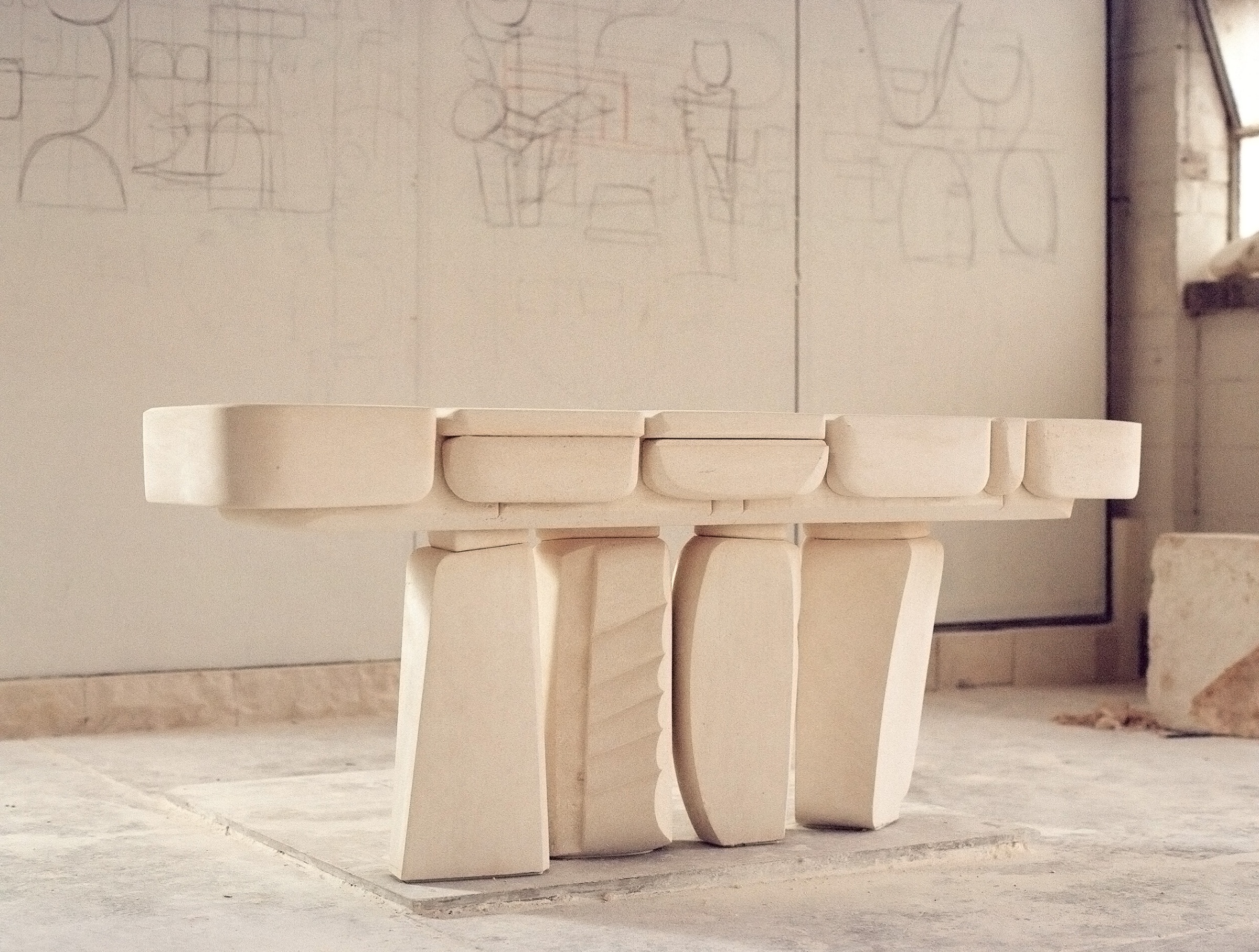The way things look and feel can profoundly shape the way we interact with them. Take, for example, Yves Béhar himself.
Yves has the understated, California cool style typical of Silicon Valley types, a sneakers-and-jeans-at-work kind of vibe. His aesthetic pairs well with his design ethos, communicating a greater concern with comfort and ease than a traditional, subjective definition of how a professional should dress, of how things should be. It’s that casual look that, in the Bay Area, exudes high status. Put him in a white lab coat, though, and Yves would resemble a bona fide mad scientist of the Young Frankenstein variety. One could reasonably attribute his billowing, feathery, gray-blonde locks to recent electrocution by some steampunk, multi-wheeled time machine/torture device. But all you need is a blue long-sleeve tee and white kicks, and an eccentric inventor becomes a California tech dude. Maybe he’s both.
Yves founded his design firm fuseproject in 1999. It’s since mushroomed to 75 employees, with Yves at the helm as the creative CEO, the visionary mind rather than a day-to-day taskmaster.
Fuseproject partners with companies worldwide—mostly tech, about half start-ups—to make cutting-edge technologies we didn’t even know we needed. The firm’s responsible for the looks of tech products you may have heard of: The Frame by Samsung, a flatscreen TV that turns into artwork when turned off; the SodaStream Source, an at-home water sparkler; the SNOO, a bassinet that rocks fussy babies back to sleep and keeps parents well-rested.
In 2010 Yves designed the JAMBOX—a portable, wireless speaker that made Bluetooth the norm in stereo. Imagine this: You’re at a party, hunched over by a blaring speaker, texting on your smartphone, unable to unplug it without cutting off the music and obliterating the vibe. Stressful, right? That’s your post-JAMBOX privilege coming through. Indeed, Yves is widely credited with making design a Silicon Valley priority, perhaps only second to Apple’s Jony Ive, and his aesthetic exists in the primordial goo of much of Silicon Valley.
- Sketching is critical to Yves’ product ideation process. Yves is sketching through some conceptual ideas for a new project. Photo by Alanna Hale
- The fuseproject headquarters in San Francisco is alive with color and whimsy. Photo by Alanna Hale
Yves’ goal as a designer is twofold: to compose visually compelling products that beautify our lives, sure, but more importantly to compose inventions that make sense in our lives. He calls this a “humanist” approach, versus a technological one. That means product ideas aren’t inspired by new technology, but by what people actually need.
Take, for example, the SNOO smart bassinet. On that particular project, Yves partnered with Dr. Harvey Karp. Harvey isn’t a technologist. He didn’t come to Yves with a flashy new technology and say, “How should we implement this?” Instead he came to Yves with years of experience as a sleep advocate and educator, and he sought to aggregate the best available technologies to make new parents’ lives a little easier.
“Technology is like fabric,” Yves tells me. “You can cut it and shape it and sew it into almost anything. It’s not the end-all, be-all. I think the clear focus should be the human need, and the human experience.” Humanism, it so happens, is also an effective vantage point in conceptualizing sellable products, as the SNOO currently goes for $1,400 a pop.
For all his prolific work, Yves, too, is understated. He doesn’t like talking much about himself. When I ask about his brainstorming routine, he touts his staff at fuseproject. When I ask what projects he’s working on now, he speaks in vague terms, unable to give away too much about not-yet-public endeavors.
His morning routine is nothing special: He wakes up around 7:30, gets the kids ready for school (or Zoom school), and starts his morning meetings with European clients around 8:30. He tries to meditate before work, not with an app or anything, just outside on a bench in his backyard. When it’s raining he sits on his 1970s Luigi Colani office couch and looks out toward San Francisco Bay. His creative time—sketching, brainstorming—happens after lunch, for no reason more profound than that the Europeans are in bed. Yves is a surfer, taking on the Ocean Beach waves three to four times a week. When I ask what time of day he likes to surf, he shrugs it off, saying it depends on the tides, the conditions, his schedule.
- Inside Yves Béhar’s fuseproject studio. Photo by Alanna Hale
- Samples inside fuseproject studio in San Francisco. Photo by Alanna Hale
No, Yves does not adhere to any rigid creative schedule; he’s no (French novelist and playwright) Honoré de Balzac, furiously writing from 1 to 8 each morning. Perhaps that fluidity is precisely why he’s so keen on surfing. The CEO describes surfing as a sort of Zen experience; looking at the shore from the ocean reminds him regularly that there’s always a different way of viewing things. Indeed, Yves finds strong parallels between design and surfing. “Surfing is never the same every day,” he tells me. “Every wave requires some improvisation. Being highly adaptive to those conditions—while being well-prepared—is, I think, what I try to do with our daily design work.” That is, maybe Yves’ lack of esoteric creative routine is his esoteric creative routine. “As a creative, everything tends to sort of blend together,” says Yves. “My schedule, my purpose, my work, and my home life all tend to blend together.”
This is even more true during the COVID-19 pandemic. Yves and I spoke eight months after the pandemic hit the Golden State, eight months into he and his wife working from home, along with their kids in Zoom school. Yves and his wife, art consultant Sabrina Buell, have four kids—two boys, two girls, ages 4 to 13. They live in Cow Hollow, a neighborhood adjacent to the city’s magnificent Presidio, in a home Vogue guessed “may be the highest-tech home in San Francisco.” Most of his collaborative work—group brainstorms, throwing ideas around casually—now happens over video-chat, which can feel stilted and challenging. And yet, Yves already waxes nostalgic about this period, as he’s gotten to spend so much of it with his family. “It’s a tremendous gift,” he tells me.
“Having kids brings a very sort of open, intuitive perspective to design,” Yves says. He shows his kids his work, brainstorms ideas with them, and asks for their input. Not in any specific way—it’s not like a first grader designed the Sayl Chair or anything. But he often asks what his children think in order to get an angle otherwise inaccessible to an adult. To Yves, incorporating feedback from a 4-year-old isn’t so different from surfing; it offers perspective we’d typically miss, it disrupts our conventional understanding of the way things are. Part of pandemic lockdown for Yves has meant a more fluid exchange of thoughts and ideas and feedback from his children. Dismantling the barrier between work and home lets Yves tap into that playful mindset in fits and spurts all day long, then bring that mentality back into his brainstorms.
- Yves Béhar’s Sayl Chair, designed with Herman Miller, is perhaps his most well-known design. Photo by Alanna Hale
- Yves Béhar is like a mad (or, happy) scientist surrounded by his creations at fuseproject. Photo by Alanna Hale
Childishness has long embedded itself in Yves’ designs, no matter how serious the product. On one end, there’s Moxie by Embodied, for example, an AI-equipped smart companion resembling a Teletubby; at the other end is PROTEUS, fuseproject’s design for a 4,000-square-foot underwater version of the International Space Station. These are two vastly different projects—two technologies that barely resemble one another. And yet they look and feel connected. They’re both blue, with rounded edges and sleek builds.
The same applies to the VOX Ventilator, designed during the COVID-19 pandemic, and the wearable UV-sensing tracker. Beyond Moxie, none of these tech products are meant explicitly for children, and yet their playful design makes them more inviting, more contemporary, and more distinct. That fun, goofy, yet highly functional aesthetic is distinctly Yves Béhar. This is what happens, it seems, when one makes a concerted effort to find new vantage points on a regular basis.
Like most American desk-job workers, Yves isn’t in the office much these days. At the time we spoke, San Francisco allowed offices to be staffed at 25%, but Yves mostly worked from his home. About once a week Yves makes his way to the fuseproject headquarters to take a look at physical prototypes his team has designed—but only when very necessary. He’s not married to the studio, another aspect of his creative adaptability.
- Yves Béhar works from the fuseproject studio in San Francisco. Photo by Alanna Hale
Fuseproject HQ resembles how I imagine baby boomers imagine millennial workspaces: a 20,000-square-foot warehouse space in San Francisco’s Design District with an open floor plan, exposed steel beams, glass boxes for meeting rooms, massive, pyramid-esque wooden bleachers as a sort of undefined engagement space. Indeed, the place looks kid-ish. It’s safe to assume that jeans are welcome here. Dogs, too.
The headquarters bursts with color, as does Yves’ own studio within it. The firm’s employees (literally) work on and in another Béhar-Miller collaboration: the Public Office Landscape. Launched in 2013, the workplace furniture system is designed to promote spontaneous, casual conversation and collaboration. Each desk has a built-in chair, perfect for sitting down with a laptop to chat a few things over. It’s designed to deformalize collaboration, to make unnecessary, all-hands meetings a thing of the past.
The place is dotted with Sayl Chairs, one at each workspace, a dozen at a conference table. This particular office chair, designed in partnership with Herman Miller, might be Yves’ most ubiquitous and enviable brainchild to date. As is typical for fuseproject designs, the Sayl Chair blends beauty and utility: Its back, designed for optimal sacral support, flows inward toward the sitter’s lower back. This gives the chair the appearance of a sail (get it?) flapping in a gust of wind, as if in battle with the elements. The Sayl Chair comes in black and “fog” (gray), and costs $555. Per the Herman Miller website, Yves cites the Golden Gate Bridge, just a couple miles from his Cow Hollow home, as his design inspiration. But, come on. What bridge has ever given you this kind of lumbar suspension?
A version of this article originally appeared in Sixtysix Issue 05 with the headline “The View from the Swell.” Subscribe today.
